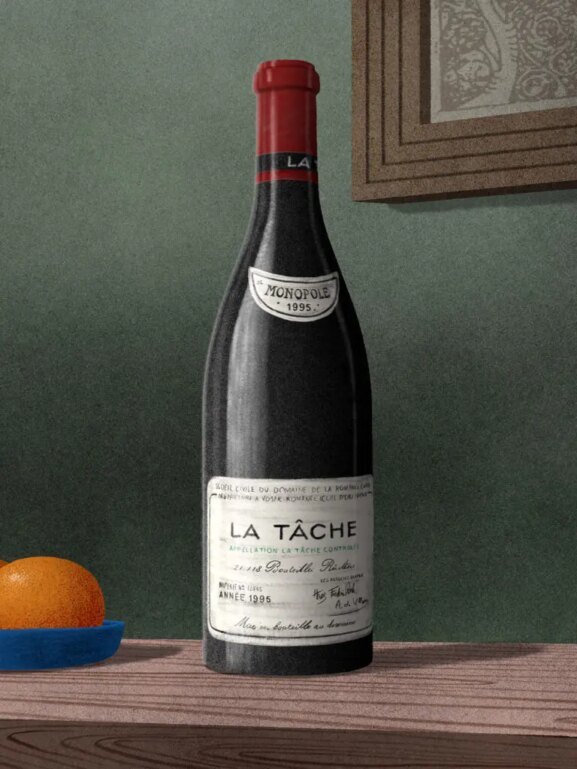Can Great Wines Exist Without Sulfites?
Not long ago, I watched an interview with natural wine producer Anders Frederik Steen on Instagram. Steen, the chef-turned-winemaker in France’s Ardèche, speaks about wine like poets speak about love—with reverence and risk.
One part of the interview lingered. Yes, plenty of fine wines are made with sulfur, he said, but the real magic is hard, perhaps impossible, when sulfites are in play. He spoke of masters like Pierre Overnoy, whose untouched, sulfite-free bottles evolve into something untamed, alive and unforgettable.
The idea that sulfur is problematic tends to spark debate, if not outright controversy. Sulfites are commonly used in winemaking to prevent oxidation or limit bacterial growth. In fact, many winemakers argue that sulfur is the quiet guardian keeping chaos at bay. I found myself wondering if there was any truth to Steen’s declaration about the magic of sulfite-free wine. Is he right? Can unsulfured, or zero-zero, wines truly flourish?
The History of Sulfur in Wine
Sulfur has been a hot button issue in the wine world, but it’s long been a part of winemaking. Pliny the Elder noted Romans burned sulfur candles in empty amphorae to prevent vinegar. By 1487, German law mandated that barrels be treated with sulfur-soaked wood.
In the late ‘80s and early ‘90s, a small but growing cohort of winemakers began responding to the overindustrialization of viticulture by “going back to the basics,” which eventually led some to omit sulfites as part of that. As the natural wine movement has grown, this practice has become more common.
Most modern winemakers, however, still track sulfur dioxide (SO₂). In the vineyard, elemental sulfur fends off fungus, while in the winery, SO₂—gas, liquid or powder—fights microbes, stops oxidation and preserves wine. Too much, and it’s harsh; the right dose, and it keeps wine stable.
Its use depends on the winemaker, but sulfur can be added at many stages of the process—from the moment the grapes arrive at the cellar, to the must, during fermentation, prior to malolactic fermentation, before racking and again at bottling.
// Create the element
var script_68b9bc59dd60b = document.createElement(“script”);
script_68b9bc59dd60b.innerHTML = `
window.googletag = window.googletag || {cmd: []};
googletag.cmd.push(function() {
var adType = “leaderboard”;
var mapping;
var lbmapping = googletag.sizeMapping()
.addSize([1024, 0], [[970, 250], [970, 90], [1, 1], [728, 90]])
.addSize([728, 0], [[728, 90], [1, 1]])
.addSize([320, 0], [[1, 1], [300, 50], [300, 100], [320, 50], [320, 100]])
.addSize([0, 0], [[1, 1], [320, 50]])
.build();; // Size mapping for leaderboard ads
var medrecmapping = googletag.sizeMapping()
.addSize([1024, 0], [[300, 600],[300, 250]])
.addSize([728, 0], [300, 250])
.addSize([320, 0], [[1, 1],[300, 250]])
.addSize([0, 0], [[1, 1], [300, 250]])
.build(); // Size mapping for med rectengle ads
if(‘/39808611/article_page/article_leaderboard_1’ == ‘/39808611/article_page/article_leaderboard_1’
|| ‘/39808611/article_page/article_leaderboard_1’ == ‘/39808611/article_page/article_leaderboard_2’
|| ‘/39808611/article_page/article_leaderboard_1’ == ‘/39808611/article_page/article_leaderboard_3’) {
mapping = googletag.sizeMapping()
.addSize([1920, 0], [[728, 90]]) // >= 1920px
.addSize([1440, 0], [[728, 90]]) // 1440px-1919px
.addSize([730, 0], [[300, 250]]) // 730px-1439px
.addSize([0, 0], [[320, 100], [320, 50], [300, 100], [300, 50], [300, 250]]) // Up to 729px
.build();
} else {
mapping = adType == ‘leaderboard’ ? lbmapping : medrecmapping;
}
googletag.defineSlot(‘/39808611/article_page/article_leaderboard_1’, [],
‘div-gpt-ad-68b9bc59dd60b’).addService(googletag.pubads()).defineSizeMapping(mapping);
googletag.pubads().enableSingleRequest();
googletag.pubads().collapseEmptyDivs();
googletag.display(‘div-gpt-ad-68b9bc59dd60b’);
});
`;
// Append the script to the body
document.body.appendChild(script_68b9bc59dd60b);
It can be divided into two categories: free and bound SO₂, which together are known as total SO₂. Free SO₂ is the one that actually matters, as it is the portion that offers protection to the wine. Lastly, it is important to note that sulfur also occurs naturally as a byproduct of fermentation.
Critics of zero-zero wines warn that sulfur-free bottles are unstable. Oxidation, microbial taint, and off-aromas are among the main threats.
“Some of the most transcendent wines I’ve ever tasted were made without sulfur—and some of the worst were, too,” says Billy Smith, a Nashville-based wine director of Rolf & Daughters, Folk and Junior.
To many winemakers, sulfur acts as a safety net. “A small dose allows fruit and minerality to shine without the wine falling apart” is a line I’ve heard repeatedly. Minimal SO₂—under 30 mg/L total—is often the compromise.
Smith warns that there is a thing as too much sulfur, which can make wines “feel dead.” The fine line, and the answer, relies on the craft. Basile Al Mileik, partner at NYC’s Fedora and wine director at St Jardim, thinks of sulfur like salt: “Use sparingly, but if you overuse it, the dish is ruined.”
Likewise, unsulfured wines demand obsessive attention. Switzerland-based Wine Director Amanda Wassmer-Bulgin stresses, “Purity isn’t about absence of sulfur—it’s clarity of vision and precision in execution.” Al Mileik adds, “Philosophically, it’s great if you can make consistent, great wines without sulfur, but please do the work.”
The Fine Line Between Flaw and Feature
Removing sulfur opens the door to unpredictability. Some see danger; others, poetry. “There is, at times, a wild beauty in these wines,” says Smith. “Their unpredictability, their raw emotion.”
Unsulfured wines challenge conventional ideas of “flaw” and “perfection.” They blur the line between defect and character and force us to reconsider what makes a wine enjoyable. Critics find flaws in these wines’ at-times unpredictable traits like Brettanomyces, volatile acidity, reduction or “mouse” (when a wine tastes a bit like the inside of a mouse cage due to bacterial spoilage.)
“Not to be contrarian, but I think it’s always good to push back on the concept of flaws, or at least broaden the topic to include how these flaws can enhance or detract from enjoyment,” Smith says.
Indeed, what unnerves some drinkers about sulfur-free wines is exactly what captivates others.
Smith notes that certain traits, like “mouse,” can feel interruptive, though they often mellow with age. But think about tannins, he says. A wine so tannic that it isn’t enjoyable for years could be seen as flawed, but this is widely accepted as a stylistic choice. “Are [both of] these wines flawed—or just being drunk too young? Should long-term ageability be the standard for judging a wine as ‘good’ or ‘bad’?” Smith asks.
// Create the element
var script_68b9bc59ddbad = document.createElement(“script”);
script_68b9bc59ddbad.innerHTML = `
window.googletag = window.googletag || {cmd: []};
googletag.cmd.push(function() {
var adType = “leaderboard”;
var mapping;
var lbmapping = googletag.sizeMapping()
.addSize([1024, 0], [[970, 250], [970, 90], [1, 1], [728, 90]])
.addSize([728, 0], [[728, 90], [1, 1]])
.addSize([320, 0], [[1, 1], [300, 50], [300, 100], [320, 50], [320, 100]])
.addSize([0, 0], [[1, 1], [320, 50]])
.build();; // Size mapping for leaderboard ads
var medrecmapping = googletag.sizeMapping()
.addSize([1024, 0], [[300, 600],[300, 250]])
.addSize([728, 0], [300, 250])
.addSize([320, 0], [[1, 1],[300, 250]])
.addSize([0, 0], [[1, 1], [300, 250]])
.build(); // Size mapping for med rectengle ads
if(‘/39808611/article_page/article_leaderboard_2’ == ‘/39808611/article_page/article_leaderboard_1’
|| ‘/39808611/article_page/article_leaderboard_2’ == ‘/39808611/article_page/article_leaderboard_2’
|| ‘/39808611/article_page/article_leaderboard_2’ == ‘/39808611/article_page/article_leaderboard_3’) {
mapping = googletag.sizeMapping()
.addSize([1920, 0], [[728, 90]]) // >= 1920px
.addSize([1440, 0], [[728, 90]]) // 1440px-1919px
.addSize([730, 0], [[300, 250]]) // 730px-1439px
.addSize([0, 0], [[320, 100], [320, 50], [300, 100], [300, 50], [300, 250]]) // Up to 729px
.build();
} else {
mapping = adType == ‘leaderboard’ ? lbmapping : medrecmapping;
}
googletag.defineSlot(‘/39808611/article_page/article_leaderboard_2’, [],
‘div-gpt-ad-68b9bc59ddbad’).addService(googletag.pubads()).defineSizeMapping(mapping);
googletag.pubads().enableSingleRequest();
googletag.pubads().collapseEmptyDivs();
googletag.display(‘div-gpt-ad-68b9bc59ddbad’);
});
`;
// Append the script to the body
document.body.appendChild(script_68b9bc59ddbad);
In unsulfured wines, traits that some might call defects can become character if handled with finesse. Al-Mileik, for example, finds that a little reduction, gas or volatile acidity can give wine an edge. Even within the world of natural wines, palates vary.
“Brettanomyces is a ‘flaw,’ but bottles of Leon Barral and Yvon Métras can wield it with finesse,” Smith says. “Volatile acidity can make your eyes water if it’s all you can taste, but when it’s done right, the aromatics leap out of the glass. Prieuré Roch comes to mind.”
Not everyone embraces these edgy traits, however, and some argue that authenticity has its limits.
Wassmer-Bulgin cautions against them. “Wine is a luxury,” she says. “We don’t need it to survive, so why drink something that’s authentic but undrinkable? A whisper of umami, a trace of brett—these can add depth. But when a flaw dominates the wine, it’s no longer complexity; it’s distraction.”
The Bottom Line: Perfection Is Boring
So, can great wine exist without sulfites? Absolutely—but it’s a tightrope walk between brilliance and chaos. These wines demand skill, patience, and vision. They reward both winemaker and drinker with tension, charm, and vitality.
“The goal isn’t to chase flawlessness—perfection is often boring,” says Wassmer-Bulgin. “I want wines with tension, character, and unpredictability, but also wines I can pour with confidence.”
Unsulfured wine reminds us that wine isn’t chemistry; it’s not about following a recipe. It’s art, adventure and sometimes chaos in a glass. When it works, it challenges our assumptions, expands our palates and proves that greatness can indeed exist without security. One sip, and the answer becomes clear: life—and wine—without a little unpredictability is simply less interesting.
But, as we so often ask whether unsulfured wine can be great, we forget that wine existed long before its use. Perhaps the question we should ask is: Can great wine exist with sulfites?”
In the end, it’s a matter of taste. Smith jokes, “Our identities are so wrapped up in the things we like or dislike… Can’t we all just fucking get along already?”
More Natural Wine Coverage
- It’s time to get to know Germany’s booming natural wine scene.
- Is the term “natural wine” exclusionary? Some think so.
- We broke down the difference between organic and biodynamic wine.
- How natural wine shops went from fringe hangouts to national phenomena.
- On the Wine Enthusiast podcast, we discuss how natural wine became so divisive.
From the Shop
Find Your Wine a Home
Our selection of sweet wine glasses is the best way to enjoy the wine’s subtle aromas and bright flavors.
The post Can Great Wines Exist Without Sulfites? appeared first on Wine Enthusiast.


